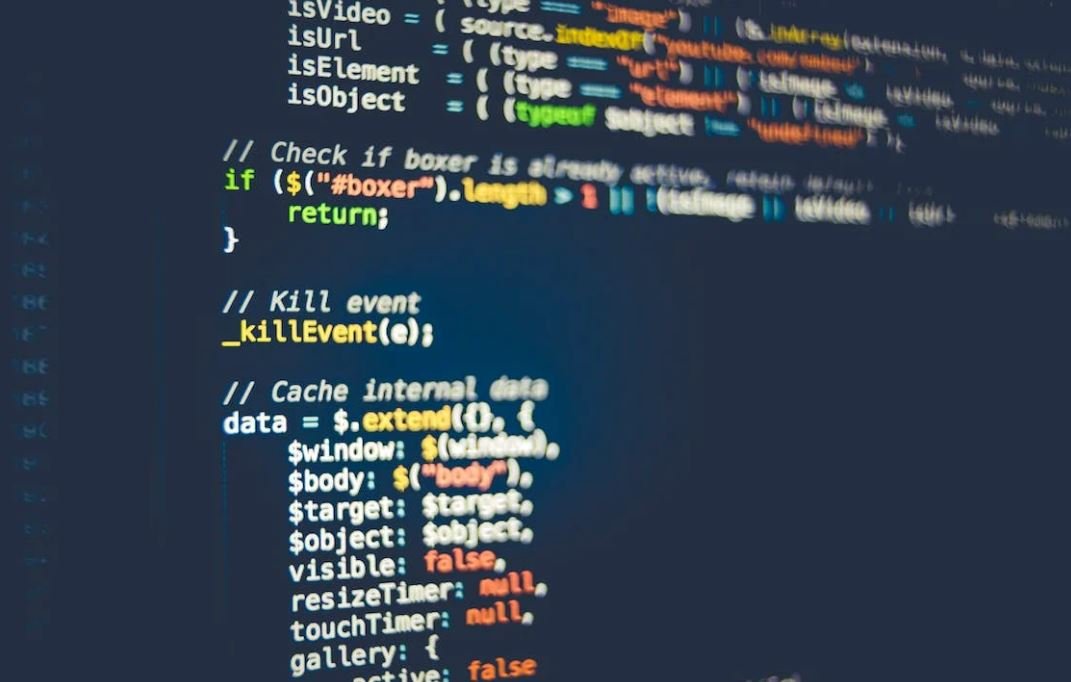Types of Generative Art
Generative art is a form of artistic expression that involves the use of algorithms and computer code to create unique and unpredictable artworks. It is a fascinating area where art and technology intersect, allowing artists to explore new possibilities and create visually captivating pieces. In this article, we will explore different types of generative art and how they are created.
Key Takeaways:
- Generative art is created using algorithms and computer code.
- There are various types of generative art, including fractal art, algorithmic art, and cellular automata.
- Generative art allows for the exploration of unpredictable and unique artistic outcomes.
- Artists use different programming languages and tools to create generative art.
Fractal Art:
Fractal art is based on fractal geometry, which is a mathematical concept involving self-similar patterns that repeat at different scales. This type of generative art often produces intricate and detailed images that are visually stunning. Artists use mathematical formulas and iterative algorithms to generate and manipulate fractal patterns. By adjusting parameters and exploring different equations, they can create a wide variety of captivating fractal art.
*Fractal art can be created using software programs that provide interface for generating fractal patterns.*
Algorithmic Art:
Algorithmic art, also known as algorithmic composition or procedural art, involves using algorithms to create works of art. Artists write code that specifies the rules and parameters for generating the artwork. The code can be simple or complex, depending on the desired outcome. Some algorithmic art pieces may involve randomness and unpredictability, while others may be more deterministic and rule-based.
*Algorithmic art allows for the creation of artworks that would be impossible to generate manually.*
Cellular Automata:
Cellular automata are computational models that consist of a grid of cells, each in one of a finite number of states. The behavior of the cells is determined by a set of rules, which define how the cells evolve over time. This type of generative art is often used to create patterns and animations that resemble natural phenomena. Famous examples of cellular automata include Conway’s Game of Life and Brian’s Brain.
*Cellular automata can simulate complex natural processes and create visually captivating patterns.*
Programming Languages and Tools:
Generative art can be created using various programming languages and tools. Some popular languages for generative art include:
- Processing: An open-source programming language specifically designed for visual art and generative design.
- JavaScript: A versatile programming language commonly used for web development and interactive art.
- Python: A general-purpose programming language with a rich ecosystem of libraries and frameworks for generative art.
Additionally, there are specialized software tools and frameworks available for creating generative art, such as NodeBox, Cinder, and openFrameworks. These tools provide artists with prebuilt functions and capabilities for generating and manipulating visual elements.
Tables:
| Programming Language | Pros | Cons |
|---|---|---|
| Processing | Beginner-friendly, extensive documentation | May require learning a new language |
| JavaScript | Widely used, versatile, browser-based | Can be challenging for beginners |
| Python | General-purpose, rich ecosystem | Some libraries may have limited generative art-specific functionality |
| Tool | Description |
|---|---|
| NodeBox | An open-source software tool for creating generative designs and animations. |
| Cinder | A C++ library used for creative coding and generative art. |
| openFrameworks | A C++ toolkit for creative coding that provides a wide range of functionalities for generative art. |
| Artist | Description |
|---|---|
| Benoit Mandelbrot | An influential mathematician who coined the term “fractal” and produced stunning fractal images. |
| Scott Draves | Creator of the Electric Sheep project, which generates collaborative fractal animations. |
| Manfred Mohr | A pioneer in computer-generated art and fractal-based artworks. |
Generative art opens up exciting possibilities for artists to create unique and captivating works. Through fractal art, algorithmic art, and cellular automata, artists harness the power of code and algorithms to express their creativity. Whether it be through intricate fractal patterns, rule-based algorithms, or simulating natural phenomena, generative art continues to push the boundaries of artistic exploration.

Common Misconceptions
Generative Art is Limited to Computer Programming
One common misconception about generative art is that it is only created through computer programming. While computer programming is a widely used method for creating generative art, it is not the only way. Generative art can also be created through manual techniques, such as painting or drawing, where the artist intentionally incorporates random or automated processes.
- Generative art can also be created manually using traditional art techniques.
- Non-programmers can also create generative art using tools and software that simulate random or automated processes.
- Computer programming may be involved in certain aspects of generative art creation, but it is not always the primary method.
Generative Art is Not Original or Unique
Another common misconception is that generative art is not original or unique because it is created through automated processes. However, this is far from the truth. Generative artists carefully design the rules, algorithms, and parameters that govern the creation of their art. Each piece of generative art is unique and can exhibit a wide range of styles and characteristics that are specific to the artist.
- Generative art is carefully designed by the artist, ensuring uniqueness and originality.
- The artist has control over the rules and parameters guiding the generative art creation.
- Generative art can possess a distinct style that reflects the artist’s vision and intention.
Generative Art is Random and Unpredictable
Many people believe that generative art is completely random and unpredictable, but this is not necessarily the case. While randomness can be incorporated into the creation process, generative artists often apply specific algorithms and rules to guide and control the outcome. They combine intentional design decisions with chance elements to achieve a balance between control and spontaneity.
- Generative art involves a blend of intentional design choices and chance elements.
- Artists use algorithms and rules to guide and control the creation process.
- The balance between control and spontaneity allows artists to produce unique and dynamic generative art.
Generative Art is Only for Tech-Savvy Individuals
Although generative art can involve technical aspects, it is not exclusively reserved for tech-savvy individuals. With the advancements in user-friendly generative art tools and software, anyone with an interest in art can explore and create generative pieces. The accessibility of these tools allows artists from various backgrounds and skill levels to experiment with generative art.
- Generative art tools and software are becoming more user-friendly, contributing to accessibility.
- People with varying levels of technical knowledge can engage in generative art creation.
- The inclusivity of generative art appeals to artists from diverse backgrounds and skill levels.
Generative Art Lacks Emotional Depth and Expression
Some may assume that generative art lacks emotional depth and expression since it often relies on automated processes. However, generative artists use these processes as a tool to express their creativity and emotions. The artist’s intention, concept, and choice of algorithms work together to convey a range of emotions and evoke unique responses from viewers.
- Generative art can evoke a wide range of emotions, depending on the artist’s intention and concept.
- The choice of algorithms and rules plays a crucial role in conveying emotional depth.
- Generative art encourages viewers to engage with it emotionally and interpret their own responses.

Generative art is a fascinating field that utilizes algorithms, randomization, and interactivity to create unique and dynamic artwork. In this article, we explore different types of generative art and compare them based on their complexity. Each table below showcases a specific type of generative art along with its corresponding complexity level. Get ready to dive into an intriguing world of digital creativity!
H2: Fractals vs. Particle Systems
Fractals | Particle Systems
—————————
Mandelbrot Set | Fireworks
Sierpinski Triangle | Smoke Simulation
Koch Curve | Rainfall Simulation
Fractals are mathematical patterns that infinitely replicate themselves. They can be seen in intricate shapes like the Mandelbrot Set or the Sierpinski Triangle. On the other hand, particle systems simulate the movement and interactions of individual particles, such as fireworks or smoke. Both fractals and particle systems offer mesmerizing visuals, but they differ in how they generate their patterns.
H2: Cellular Automata vs. L-Systems
Cellular Automata | L-Systems
—————————–
Conway’s Game of Life | Fractal Trees
Brian’s Brain | Algae Growth
Wireworld | Coral Growth
Cellular automata are represented by a grid of cells, where the state of each cell evolves over time based on a set of rules. Conway’s Game of Life is a famous example that demonstrates the emergence of complex patterns from simple rules. On the other hand, L-systems are string rewriting systems used to generate the structures of plants and trees. Fractal trees are a stunning result of L-systems, mimicking the natural growth of foliage.
H2: Genetic Algorithms vs. Waveform Synthesis
Genetic Algorithms | Waveform Synthesis
—————————————
Evolutionary Art | Soundscapes
Artificial Selection | Music Generation
Breeding Algorithm | Ambient Noise
Genetic algorithms draw inspiration from the process of evolution, using iterative processes to generate novel solutions. In terms of generative art, genetic algorithms can create beautiful and unexpected visual compositions. On the other side of the spectrum, we have waveform synthesis, which generates audio signals by manipulating and combining basic waveforms. It allows for the creation of immersive soundscapes and music compositions.
H2: Data Visualization vs. Algorithmic Painting
Data Visualization | Algorithmic Painting
—————————————–
Pie Charts | Abstract Color Patterns
Bar Graphs | Collage Artwork
Heatmaps | Geometric Shapes
Data visualization is all about presenting information in a visual and understandable format. Pie charts, bar graphs, and heatmaps are commonly used to represent data in a clear and engaging way. Conversely, algorithmic painting involves the use of algorithms and computational processes to create visual art. Artists can generate abstract color patterns, collage artwork, and geometric shapes, among other artistic forms.
H2: Conclusion
Generative art encompasses a vast array of techniques and approaches, each with its unique charm and complexity. Whether it’s fractals, cellular automata, genetic algorithms, data visualization, or algorithmic painting, generative art continues to push the boundaries of creativity and innovation. By embracing algorithms and randomness, artists are able to produce captivating artwork that evolves and surprises both the creator and the audience. So, let’s dive into this mesmerizing world and experience the endless possibilities of generative art!
Types of Generative Art – Frequently Asked Questions
What is generative art?
What is generative art?
How does generative art differ from traditional art forms?
How does generative art differ from traditional art forms?
What are some common types of generative art?
What are some common types of generative art?
How is generative art created?
How is generative art created?
What are the benefits of generative art?
What are the benefits of generative art?
Can generative art be considered a form of AI art?
Can generative art be considered a form of AI art?
Are there any famous generative artists?
Are there any famous generative artists?
Can generative art be sold or owned?
Can generative art be sold or owned?
Where can I see examples of generative art?
Where can I see examples of generative art?
Can I create generative art without coding knowledge?
Can I create generative art without coding knowledge?




